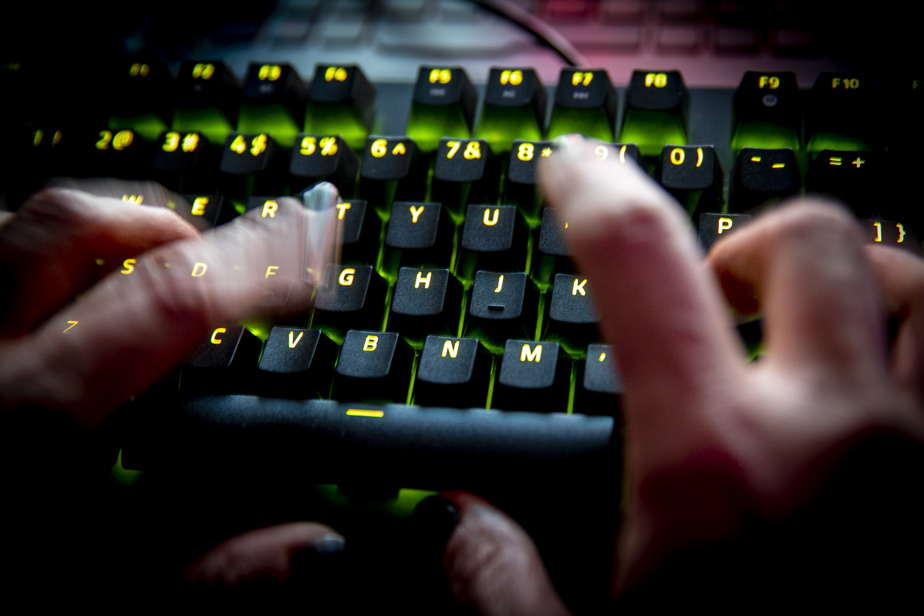Photos of Canadian victims are among thousands of images of child sexual assaults that an internet monitoring group found in databases used to “train” popular image generators.
“It’s another slap in the face for the victims,” said Lloyd Richardson, director of technology at the Canadian Center for Child Protection.
Richardson said the finding shows that artificial intelligence needs to be considered by the federal government as it prepares its long-awaited bill on harmful online content.
Researchers at the Internet Observatory at Stanford University in California found more than 3,200 alleged child sexual abuse images in the LAION database, the non-profit large-scale artificial intelligence network. This open source database has been used in artificial intelligence to “train” well-known image generators.
The Stanford Observatory worked with the Canadian Center for Child Protection to verify the results using the center’s “Project Arachnid” tool, which contains a bank of known images of child sexual assaults. Mr. Richardson did not specify how many Canadian victims there were among the thousands of images found.
Artificial intelligence (AI) image generators gained popularity after their launch, but they sparked serious concerns and controversy, including from artists whose works were used without their consent .
These generators draw their inspiration and training from billions of images found on the internet. The most popular generators use the LAION network.
David Thiel, chief technologist at the Stanford Internet Observatory, said LAION doesn’t just contain images of artwork, monuments and charming corgis to feed image generators.
“These generators were also trained on a ton of explicit material […] on a ton of photos of children and people of other ages, but also on (child sexual assault content),” said Mr. Thiel, the author of the new Observatory report.
He admits that images of child sexual assault represent only a tiny part of the 5.8 billion images in the LAION network. But he points out that these images still affect what AI generators create. This training can help sexualize a child’s image or even make certain images resemble a known victim, the researcher said.
” The damage is done ”
Mr. Thiel believes the negative impacts are immeasurable and are already being felt around the world. He has been contacted by people in several countries concerned about AI-generated photos of naked teenagers and children.
A Winnipeg school informed parents earlier this month that AI-generated photos of underage students had been shared. At least 17 photos of female students taken on social media were explicitly altered using artificial intelligence. School officials said they contacted police.
“This is a closely related issue,” says Mr. Thiel.
The LAION network said in a statement to The Associated Press this week that it had temporarily closed the databanks to ensure their security before making them public again.
But for Mr. Thiel, the damage is done and it is now too late to put the toothpaste back in the tube: people have already downloaded the datasets that contain child sexual assault and they will continue to use them.
“You really have to get it right the first time: you can’t just market the product and fix it later,” he emphasizes. We will have to face this problem for years because people rushed into this market without taking the required precautions. »
These data sets should have been examined before being made public to detect child sexual assault, argues Thiel, who adds that the AI-generated images have also been found to be racist and misogynistic.
Ottawa must act
Mr. Richardson of the Canadian Center for Child Protection believes it is not just the responsibility of industry, but also of states, to address issues related to AI.
Prime Minister Justin Trudeau promised to introduce a bill on harmful online content during the 2019 federal election campaign. This law would be intended to combat hate speech, terrorist propaganda, comments that incite violence and sexual exploitation of children.
But last year, the government sent its draft bill back to the drawing board, after facing criticism, particularly over its impacts on freedom of expression online.
The panel that reworked the bill recently released an open letter saying Canadian children are currently less protected than those in countries where similar laws are already in place.
Mr. Richardson said there are certainly steps Ottawa could take. “There’s this idea that the internet is something far removed from the reality of state law, which is just absurd,” he said. I am convinced that there are things we can do in this space. »
